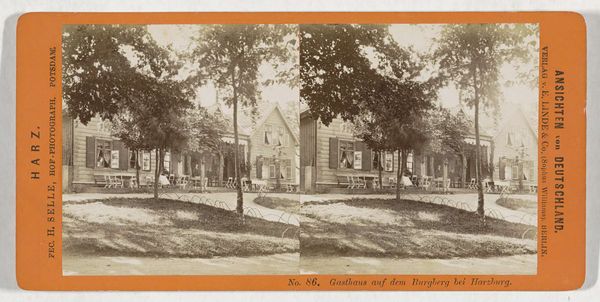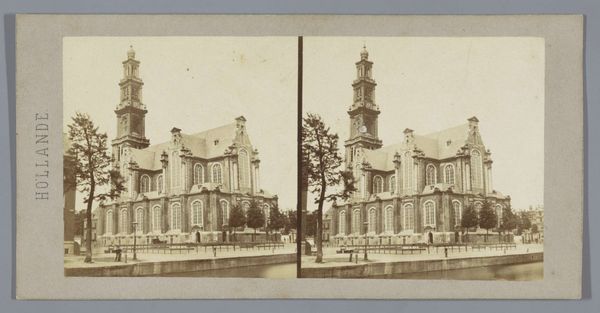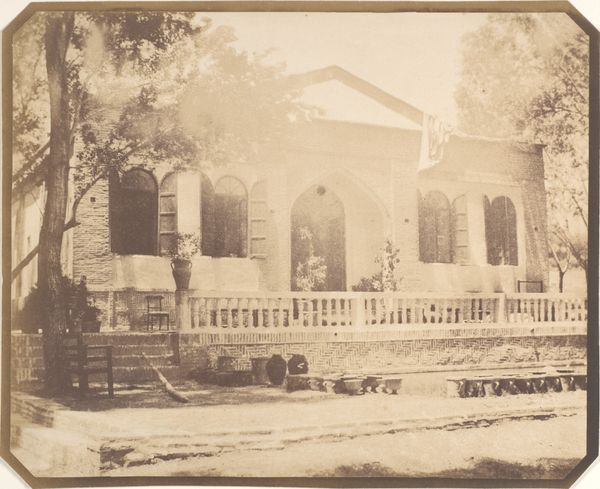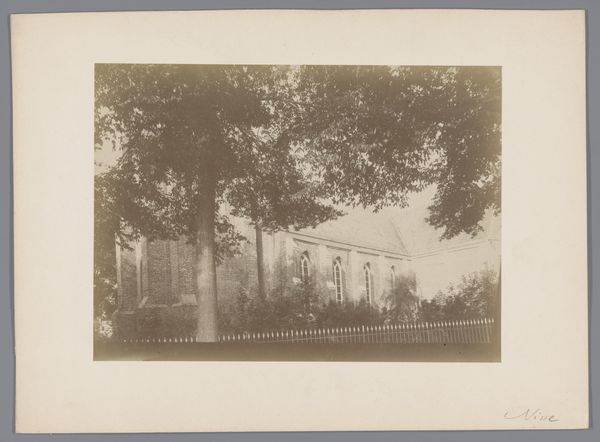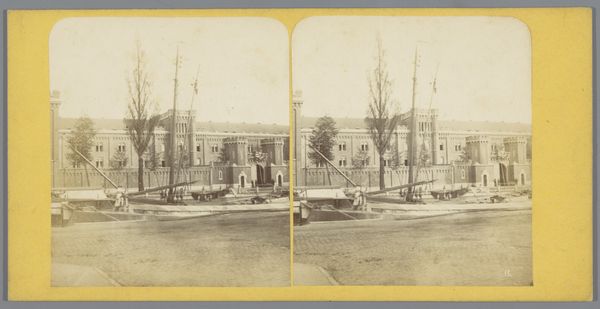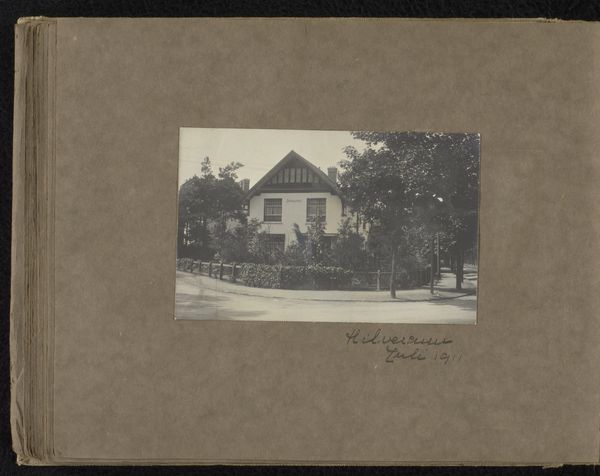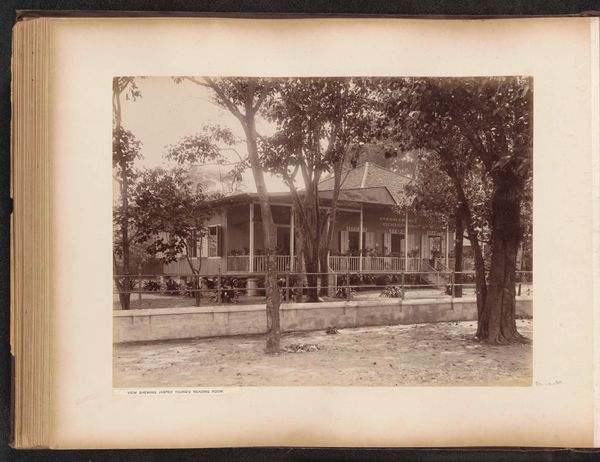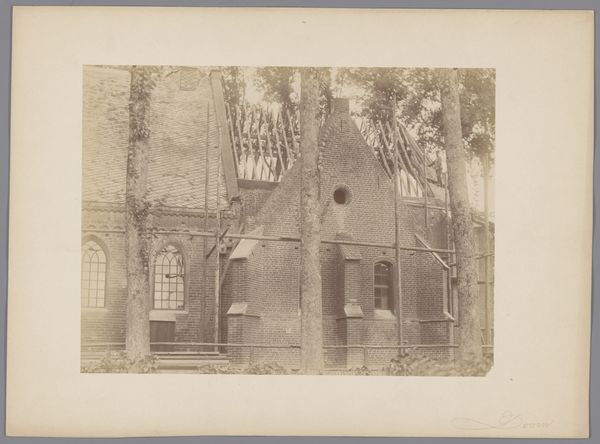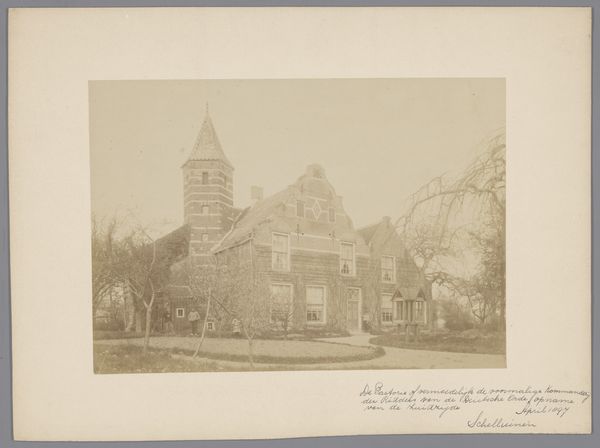
Gezicht op het stadhuis van Ladysmith dat is beschadigd door gevechten tijdens de Tweede Boerenoorlog 1901
0:00
0:00
Dimensions: height 88 mm, width 178 mm
Copyright: Rijks Museum: Open Domain
Curator: Looking at this photograph by Underwood & Underwood from 1901, titled "Gezicht op het stadhuis van Ladysmith dat is beschadigd door gevechten tijdens de Tweede Boerenoorlog," what immediately strikes you? Editor: Well, the visible damage on the building is quite telling. You can see that the gelatin silver print captures the rough textures, but it also feels detached, almost romantic, considering the subject matter. The stark daylight reveals all. Curator: That contrast is exactly what draws me in. This image functions as a historical document. It reflects the shift in visual media at the turn of the century, in which the photographic lens brings new dimensions to journalism. Think of the implications, in that period, of bringing a photograph such as this one into homes around the world! Editor: Yes, but I'm also thinking about the photographer's labor here, moving all of the equipment, setting up, and processing the images. We are dealing with very specific material and social conditions, not just a "capture" of reality. This would have involved significant preparation, physical exertion, and financial investment. Curator: True. And that investment speaks to the cultural appetite of the time. People were keen to experience the war through mediated imagery. But what kind of “experience” were they after? What exactly did consumers *do* with the stereographic card? Editor: Perhaps they were looking for ways to reflect on, or even come to terms with, how conflicts transform landscapes and the communities that occupy them. Maybe they considered it another trophy to display. You said you think that this scene looks romantic? To me it simply evokes the way conflicts always disrupt any sense of harmony, by introducing unexpected juxtapositions, rough textures, scars... Curator: Precisely. The formal composition, the columns standing amid the destruction... It's a staged narrative almost. We see the lingering remnants of violence imposed onto a structured town, implying ideas of progress disrupted. Editor: Thinking about materials again, that silver gelatin emulsion gives us such incredible details of texture on the facade. But it also allows for mass production, which in turn transforms access and public memory related to that facade. Curator: An important point about how reproducibility changes the perception of historic sites and collective memory. Editor: Ultimately, the convergence of process, image and intent transforms a pile of stones into an artefact.
Comments
No comments
Be the first to comment and join the conversation on the ultimate creative platform.



